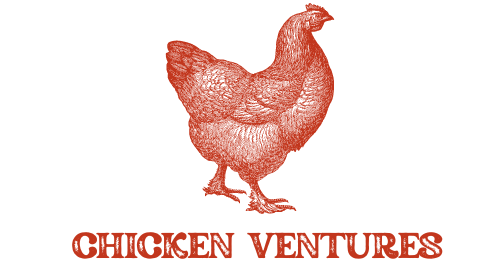Popular for their exquisite plumage, robust character, and outstanding egg-laying ability, Wyandotte chickens are Understanding their characteristics, behaviors, and functions in the flock will help one decide between a Wyandotte hen and a rooster. The features, benefits, and difficulties of raising Wyandotte hens instead of roosters will be discussed in this paper.
- Introduction
- Wyandotte chicken History
- Physical distinctions
- Behavioral Variances
- Brooding and Laying Eggs: Production
- Function in the Flock:
- Benefits of keeping Wyandotte Hens
- Benefits of Keeping Wyandotte Roosters
- Difficulties Maintaining Wyandotte Roosters
- Deciding Between a Wyandotte Hen and Rooster
- Tips & Care Guide for Wyandotte Chickens
- Conclusion
Introduction
The beauty and adaptability of Wyandotte hens make them much sought for. Knowing the differences between Wyandotte hens and roosters will let you, regardless of experience level as a chicken keeper, make wise selections for your flock.

Wyandotte chicken History
Wyandotte chickens first came from American late 19th-century farms. They were bred to get a dual-purpose nature chicken that can produce both meat and eggs. Originally named for the Wyandotte Nation, these chickens gained popularity right once for their flexibility and output.
Physical distinctions
Weight & Size
- Typical weight range for Wyandotte hens is 5.5 to 6.5 pounds.
- Roosters are larger weighing between 7.5 and 8.5 pounds
Feather Texture and Pattern
- Both Wyandotte roosters and hens show amazing feather patterns. Typical variations are Silver Laced, Gold Laced, and Blue Laced Red.
- Compared to hens, roosters frequently feature more vivid and iridescent plumage.
Comb and wattles:
- Hens have smaller combs and watts.
- Larger, more obvious combs and wattles on roosters help to set them apart from hens.

Behavioral Variances
Usually calm and gentle, hen temperaments make them great for backyard flocks.
Particularly during mating season, roosters can be possessive and occasionally hostile.
Temperament
- Hens: Generally calm and docile, making them excellent for backyard flocks.
- Roosters: Can be protective and sometimes aggressive, especially during mating season.
Voice calling
- Hens: often cluck and produce quieter sounds.
- Roosters: Renowned for their noisy crowing, which can begin as early as morning.
Preventiveness
- Hens: Less protective and more preoccupied with foraging and nesting.
- Rooster: Acting as flock guards, roosters alert hens to possible threats.

Brooding and Laying Eggs: Production
Egg Production
Hens: Perfect layers, turning out between 200 and 250 brown eggs annually.
Roosters: Though they don’t lay eggs, roosters are quite important in fertilizing them.
Broodiness
Hens: Some may go brooding and wish to hatch eggs.
Roosters: Do not brood but rather guard the brooding hens.
Function in the Flock:
Let’s take a look at the role of both hen and rooster in the flock,
Hens’ Function
- Primary egg layers.
- Forage for food.
- Nurture chicks.
Roosters’ Role
- Keep predators away from the flock.
- Maintain order among hens.
- Fertilize eggs for breeding.
Benefits of keeping Wyandotte Hens
- Excellent egg layers.
- Have a simple and kind temperament.
- A lesser noise level than that of roosters.
Benefits of Keeping Wyandotte Roosters
- Protect the flock from all kinds of predators.
- Help to control the pecking order in flocking management.
- Essential for fertilizing eggs..
Difficulties Maintaining Wyandotte Roosters
Wyandotte roosters pose various difficulties. Their possible aggressiveness is one major problem; occasionally they treat other animals as well as people, which would complicate handling and interactions. Their crowing can also be really loud and often, therefore upsetting anybody who live near neighbors or in a noise-sensitive location. Their space requirements also factor in another respect. Wyandotte roosters require lots of area to wander and exercise; without enough space, they may grow restless or start acting out of turn.
Deciding Between a Wyandotte Hen and Rooster
Your main objectives will help you choose between a Wyandotte hen and rooster. Given your primary goal is consistent egg production, chickens are the superior choice since they lay eggs on demand. On the other hand, a rooster is absolutely crucial if you want to breed and need defense for your herd. These uses depend on roosters since they defend and are quite important in mating.
Tips & Care Guide for Wyandotte Chickens
Housing
Set up a large coop with enough ventilation to guarantee Wyandotte chicken welfare. They will remain healthy and pleasant this way. Make sure roosting perches and nesting boxes fit their need for relaxation and egg laying as well.
Feeding
To keep Wyandotte chickens healthy, present a balanced diet with vegetables, grains, and chicken feed. Maintaining their hydration depends on fresh water being continually available as well.

Health Tracking
Check your Wyandotte hens often for evidence of diseases or parasites. Preventing sickness and guaranteeing a safe habitat for your flock depend on the coop remaining clean.
Conclusion
Every distinctive quality of Wyandotte hens and roosters will help your flock. Perfect for backyard flocks, hen eggs are superb layers with subdued tempers. Conversely, roosters provide protection and support order maintenance. Knowing these variances will enable you to build a harmonic and successful flock.

